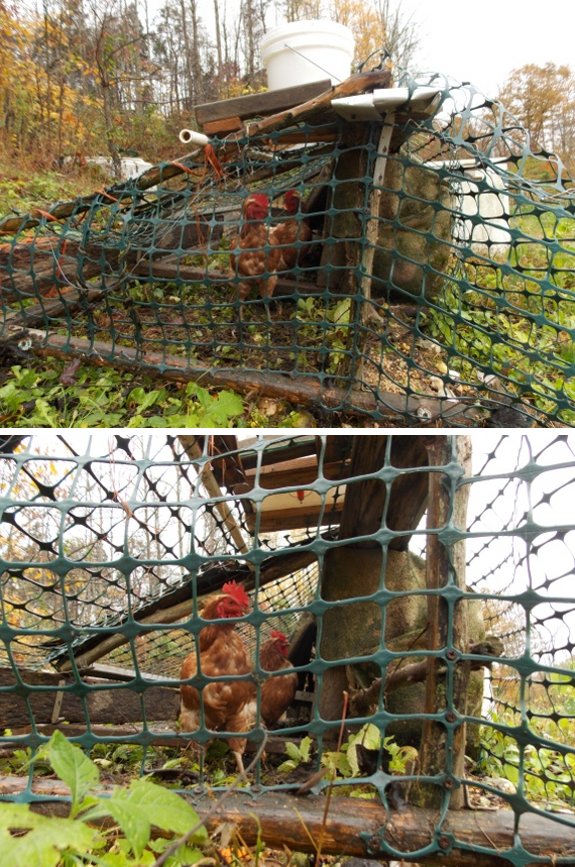Chicken tractor waterer details

The new 2 gallon chicken tractor bucket waterer is a nice upgrade.
We have 3 hens in our tractor and it’s usually enough for all week.
5 gallons would be too heavy and make it harder to move.

The new 2 gallon chicken tractor bucket waterer is a nice upgrade.
We have 3 hens in our tractor and it’s usually enough for all week.
5 gallons would be too heavy and make it harder to move.
Free
ranging your chicken flock has a lot of advantages (and just sounds idyllic),
but you’ll also run into several problems. If you understand the
potential pitfalls up front, chances are you can work around them and
give your flock limited or complete access to free range.
We’re resting our pastures this winter by free ranging the flock as much as possible, but we’re also taking our own advice. Once the nine week old broilers started scratching up my garlic, they got relegated to the orchard half of the yard, and we’ve been giving them a snack every evening before shutting them in the coop for a safe night’s sleep. So far, we’re enjoying the best of both worlds — happy and healthy chickens and a free range method we can live with.
Duncan’s heated chicken waterer was exciting, but I have to admit that I found his chicken tractor wheel lift system even more inspiring. Although we’ve since changed over to pastures, we spent the first four years of our chicken-keeping career dragging tractors around the yard. At first, Mark mounted wheels on some of the tractors, but the wheels tended to raise that end off the ground and let chickens sneak out, so I eventually had him delete
them. Not so with Duncan’s wheels! He writes:
Duncan’s stunning diagrams and photos tell the whole story much better than I could. Aren’t you chicken tractor folks itching to try it out?